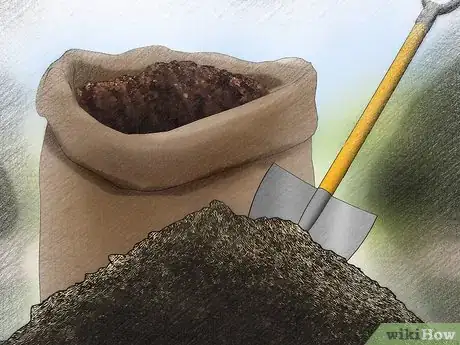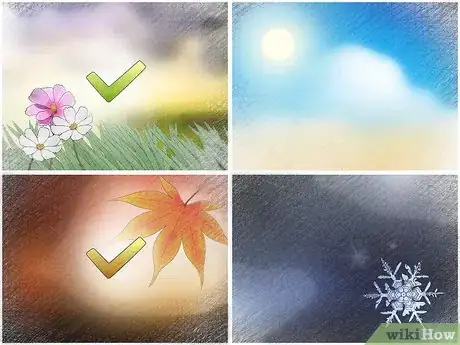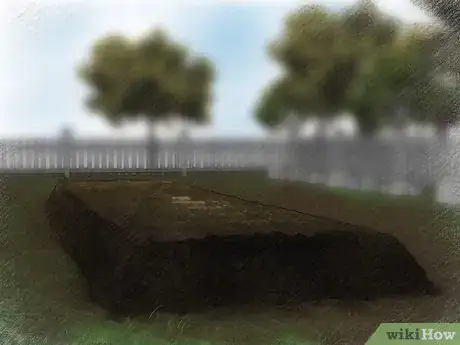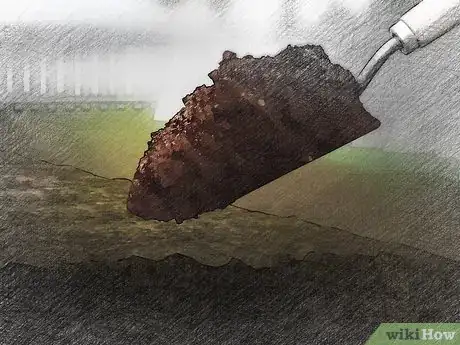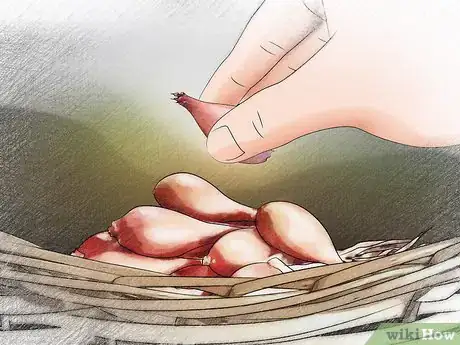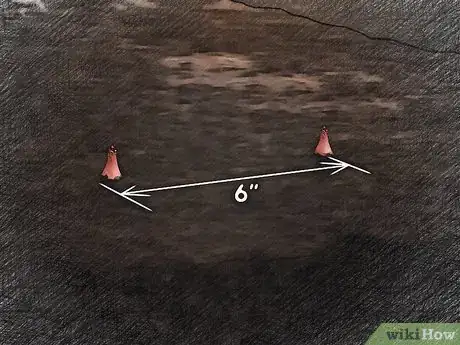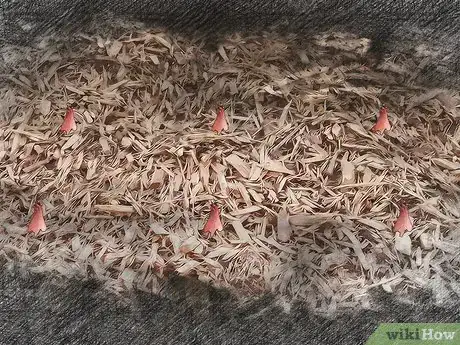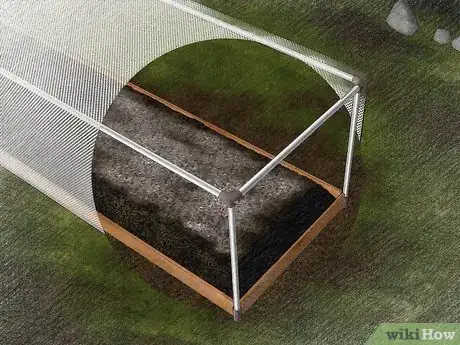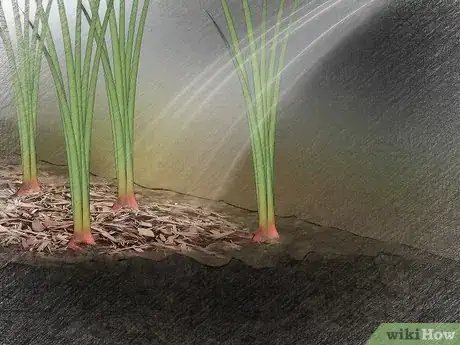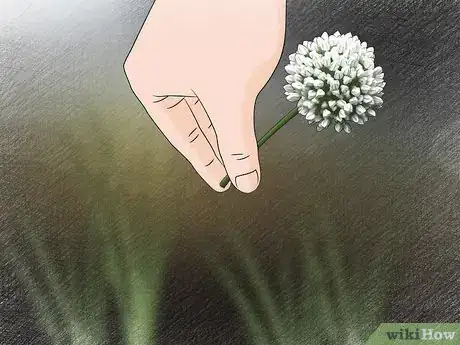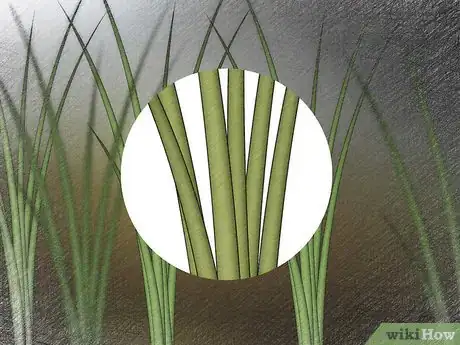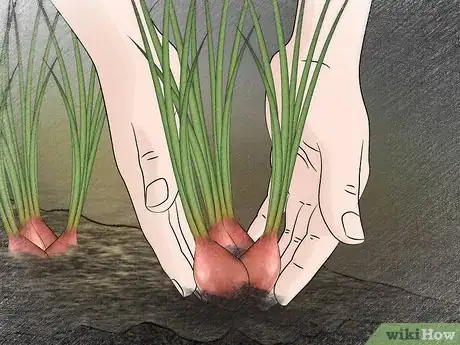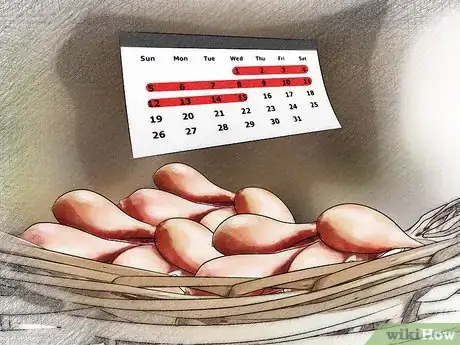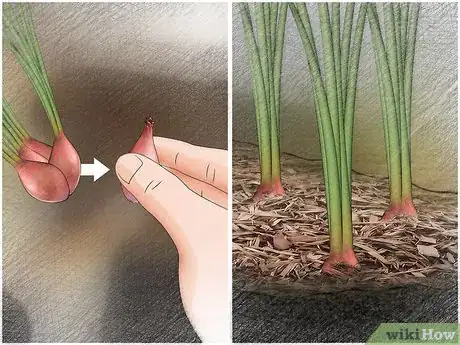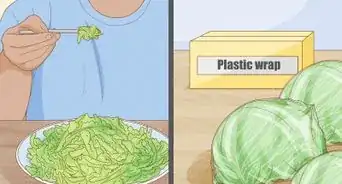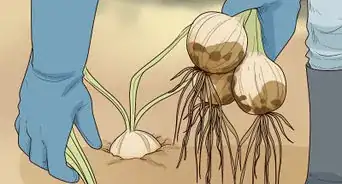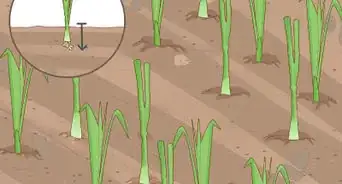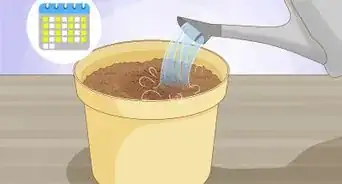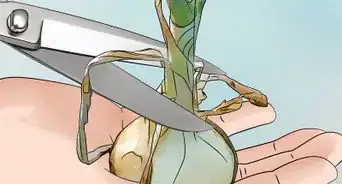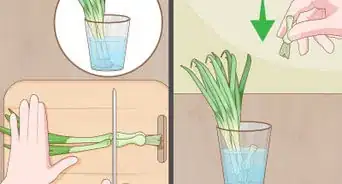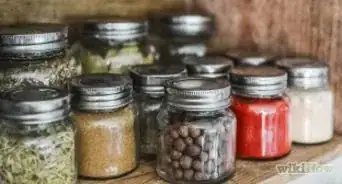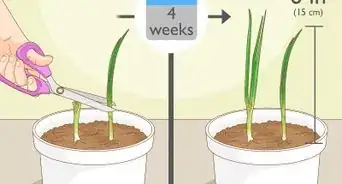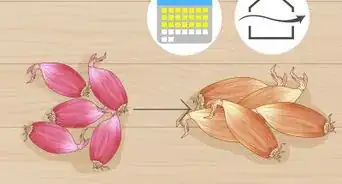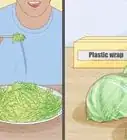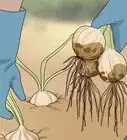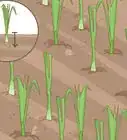This article was co-authored by Maggie Moran. Maggie Moran is a Professional Gardener in Pennsylvania.
wikiHow marks an article as reader-approved once it receives enough positive feedback. In this case, 100% of readers who voted found the article helpful, earning it our reader-approved status.
This article has been viewed 153,873 times.
Shallots are a type of onion that have a much milder flavor than typical onions, making them ideal for when you don’t want a strong onion for a soup or raw dish. You can grow shallots either from seeds or from bulbs, and you can plant them in either fall or early spring. The keys to growing healthy shallot plants is that they need well-draining soil, and they don’t like to compete with weeds.
Steps
Planting Bulbs
-
1Gather your supplies. To plant shallots, you'll need at least one set of shallots for planting, a space to plant them, and some gardening tools and equipment, such as:
- Soil
- Well-decomposed compost
- Spade or shovel
-
2Choose the season. You can plant shallots in either fall or spring, but you'll get an earlier crop if you plant in fall. Also, some say that you'll get larger and better tasting shallots if you put them through vernalization.
- Vernalization is the process of exposing a seed or whole plant to cold temperatures in order to promote growth.[1]
- To plant in fall, pick a date that’s after the first frost and before the cold weather. In spring, aim for early in the season, in March or April.
Advertisement -
3Select the right location. Shallots need full sun, well-draining soil, and an area that’s as free of weeds as possible. Raised beds are ideal for shallots, especially if your ground is particularly wet. Soils that drain well include:[2]
- Sand
- Silt
- Loam
-
4Prepare the soil. You can help your shallots by mixing the soil in the seedbed with compost that’s very highly decomposed. Add one bucketful of compost per square meter (1.1 by 1.1 yards).
- Avoid adding manure to the soil, as it’s too high in nitrogen.
- The ideal pH for shallot soil is between 6.2 and 6.8.[3]
-
5Separate the bulbs. Like garlic, shallots grow in heads that contain multiple bulbs. If your shallots aren't in separate bulbs, peel each one away from the main head.
- Each bulb will grow a new shallot head that contains several bulbs, or cloves.[4]
-
6Plant the bulbs. To plant shallots, space the bulbs out so there's about two to six inches (five to 15 cm) between each bulb. Push each bulb into the soil with the roots facing down. Keep pushing until the shallot is about three-quarters buried in the soil.
- Alternatively, you can also plant shallot seeds instead of bulbs. Plant the seeds at the same distance, and bury each seed about 0.5 inches (1 cm) deep. Plants seeds in spring rather than fall.[5]
-
7Top with mulch. For fall plantings, cover the top of the shallots with straw, hay, leaves, or wood chips to help protect them from the cold and frost over the winter. For the best results, use a good six inches (15 cm) of mulch.[6]
-
8Water the bulbs. Shallots don’t need a lot of extra attention and watering, but you should water them once you’ve put them in the soil. One good watering now should last them through the winter.
- The mulch layer on top will also help to keep moisture in the soil.
Caring for Shallots
-
1Protect them from pests and predators. When shallots are growing, they send up scapes the same way garlic and other onions do. Small mammals love chewing on these. You can protect the shallots by covering the garden with fleece or a net, which will keep predators out.
- The netting isn't necessary until spring, when the shallots will start to actively grow.
- You can also protect the shallots from worms by sprinkling the area with wood ashes every couple months.
-
2Weed the area regularly. Shallots don’t like competing with weeds, so it’s important to stay on top of removing them from the soil where shallots are growing.
- Just be careful that you don’t accidentally pull out the shallot scapes when you're weeding or removing grass.[7]
- Weed the area by hand, rather than with a spade or other tool, to prevent damaging the roots.
-
3Water the plants during dry spells. You won’t have to water your shallots much, even during the active growth phase, because shallots don’t require a lot of extra water. However, if the weather turns dry and you don’t get much rain, make sure the soil stays somewhat moist.[8]
-
4Cut off flowers. If your shallots begin to flower, this will take energy away from the bulbs, meaning your onions won’t be as large or tasty. To prevent this from happening, cut off any flowers that start to grow.
- Cut flowers at the stem to prevent the shallots from going into reproduction mode.
Harvesting, Storing, and Replanting
-
1Uncover the shallots before harvesting. Shallots will be ready to harvest at the end of June or the beginning of July (for fall plantings), or late July into August (for spring plantings. You'll know they're ready when the foliage turns yellow.
- Pick a dry day and use a spade or fork to gently loosen the soil around the shallots and lift them to the surface. Be careful not to uproot them or damage the roots.
- Leave the shallots to sit exposed on top of the soil for one to two sunny days. When they're ready for harvest, they’ll be dried out and the dirt will come off easily.
- Uncovering the shallots will help them mature because exposing them to the sun will help them ripen.[9]
-
2Harvest the shallots. To remove the shallots from the soil, take a fork or spade and place it to the side of the shallot. Stick the spade into the soil under the shallot on a 45-degree angle. This will break the roots, and you'll be able to lift the shallot free.[10]
- Shake each shallot to remove excess dirt from the bulbs.
-
3Enjoy or store for later use. Freshly harvested shallots can be eaten immediately or stored for later use. Shallots can also be stored for several months, so you'll still have shallots over the winter. To store shallots:[11]
- Spread them out in a single layer and let them cure for one or two weeks in a warm and dry location.
- Cut off any remaining leaves from the tops of the bulbs, and transfer the shallots to a mesh bag and store them somewhere cool and dry.
- When stored like this, shallots may last up to six months.
-
4Save bulbs for replanting. The shallot bulbs you grow can also be set aside and replanted, and from each bulb you'll get a brand new head all over again. From the shallots that you've set aside for storage, choose the healthiest, driest, and largest bulbs to replant in the fall or spring.[12]
- Do not use wet or damaged bulbs for replanting.
Expert Q&A
Did you know you can get expert answers for this article?
Unlock expert answers by supporting wikiHow
-
QuestionWhat is the difference between an onion and a shallot?
 Maggie MoranMaggie Moran is a Professional Gardener in Pennsylvania.
Maggie MoranMaggie Moran is a Professional Gardener in Pennsylvania.
Home & Garden Specialist
-
QuestionAre shallots annual or perennial?
 Maggie MoranMaggie Moran is a Professional Gardener in Pennsylvania.
Maggie MoranMaggie Moran is a Professional Gardener in Pennsylvania.
Home & Garden Specialist
-
QuestionHow far apart do you plant shallots?
 Maggie MoranMaggie Moran is a Professional Gardener in Pennsylvania.
Maggie MoranMaggie Moran is a Professional Gardener in Pennsylvania.
Home & Garden Specialist
References
- ↑ http://www.thompson-morgan.com/how-to-grow-onions-and-shallots
- ↑ https://www.growfruitandveg.co.uk/guides/growing-shallots
- ↑ http://www.gardening.cornell.edu/homegardening/scene83de.html
- ↑ http://www.rodalesorganiclife.com/garden/fall-planted-shallots/slide/1
- ↑ https://www.growfruitandveg.co.uk/guides/growing-shallots
- ↑ http://www.rodalesorganiclife.com/garden/fall-planted-shallots/slide/1
- ↑ https://www.growfruitandveg.co.uk/guides/growing-shallots
- ↑ https://www.growfruitandveg.co.uk/guides/growing-shallots
- ↑ http://www.thompson-morgan.com/how-to-grow-onions-and-shallots
About This Article
To plant shallots, start in the spring or fall by finding an area with well-draining soil that gets lots of direct sunlight. Then, add a bucketful of compost per square meter of soil to encourage plant growth. Next, separate your bulbs, and plant them 2-6 inches apart by pushing them ¾ of the way into the soil with their roots facing down. Once the bulbs are in the ground, water them, then wait for them to grow. If you’re planting in the fall, make sure you cover your shallots with straw or leaves to protect them from the cold. For tips from our Gardening reviewer on how to protect your shallots from pests and predators, keep reading!
